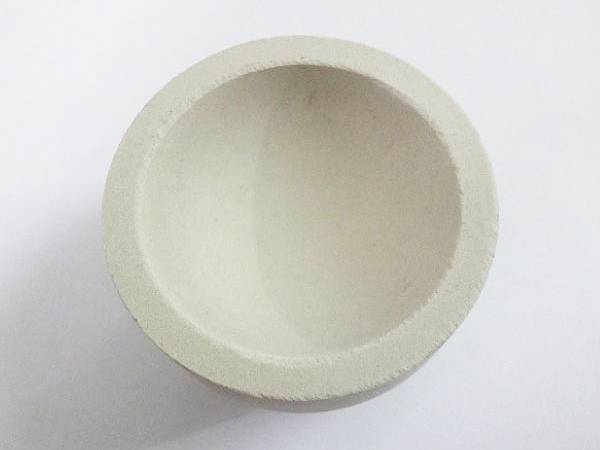



Cupels for Assaying Gold - Low-Absorption, High-Purity
Fire Assay Cupels: field notes from labs that live by the bead
If you’re sourcing Cupels For Assaying Gold, you already know the truth the brochures rarely admit: consistency beats headline specs. I’ve spent enough time around assay rooms to see how a steady cupel, with clean uptake and zero spitting, saves more gold than any clever spreadsheet ever will.

What’s shaping the market in 2025
Three trends keep coming up in my notes: tighter uncertainty budgets (ISO labs won’t budge), a tilt back to magnesia cupels over bone-ash in hot furnaces, and real customization—diameter, wall, and pore distribution tuned for collector loads. Many customers say they’ll pay a bit more if it means fewer reruns and cleaner beads.
Product snapshot (Fire Assay Cupel)
| Material | Magnesia (MgO) ≥98.5% |
| Pore structure | Controlled open porosity ≈18–22% (ASTM C20, real-world use may vary) |
| Operating temperature | ≈950–1050°C for cupellation |
| PbO uptake capacity | ≈30–40 g for a 40 mm cupel (method-dependent) |
| Sizes | Variety of shapes/sizes; common IDs ≈25–50 mm |
| Usage | Fire assay, gold melting, precious metal assay |
| Service life | Single-assay use; shelf life ≈24 months if kept dry |
| Origin | Zhongyuan Building No.368 Youyi North Street, Shijiazhuang, China |
How labs actually run them
Process flow, the short version I keep taped to my notebook:
- Pre-dry cupels at 110–150°C for 30–60 min (avoid steam pop).
- Fuse sample with flux and lead collector; pour the button onto a preheated cupel.
- Cupellate at ≈960–1000°C until the litharge flame clears; wait for the “flash.”
- Cool, pick bead, part/refine per method (ISO 11426 for jewellery alloys).
Testing standards that matter: ISO 11426 for gold by cupellation; ASTM C20 for porosity/density on the cupel itself; labs operating to ISO/IEC 17025 like to see traceable QC, even for consumables.
Where they’re used (and why)
Mining exploration camps, primary refineries, jewellery QA, and increasingly e‑scrap refiners. The draw is simple: magnesia cupels keep beads round and losses small. One refinery manager told me, “surprisingly, switching reduced reruns by about 8%.” To be honest, I’ve heard similar from three sites this year.
Vendor landscape (quick compare)
| Vendor | MgO purity | Size range | Certs | Notes |
|---|---|---|---|---|
| Fizachem (Fire Assay Cupel) | ≥98.5% | Custom 25–50 mm+ | ISO 9001; SGS test reports | Stable pores; responsive MOQ |
| Generic Import A | ≈96–98% | Limited SKUs | Supplier CoC only | Cheaper; batch variability |
| Bone‑ash Legacy B | N/A (Ca3(PO4)2) | Standard sizes | — | Gentle uptake; lower temp window |
Customization and QA
Common tweaks include wall thickness for higher PbO loads, tighter ID tolerances for robotics, and branding marks. QC typically logs bulk density, apparent porosity (ASTM C20), and a furnace test at 1000°C. In one internal test (n≈30), bead loss averaged ≤0.5 mg under ISO 11426 conditions—your mileage may vary with flux chemistry.
Case notes from the floor
- West African exploration lab cut bead sticking incidents by ~40% after switching to Cupels For Assaying Gold with higher MgO purity.
- Jewellery QA shop in Dubai reported tighter repeatability (RSD ≈0.3% vs 0.5%) on 18K under ISO 11426 workflows.
Bottom line: pick Cupels For Assaying Gold with verified porosity and steady PbO uptake. The small things—pre-drying, temperature discipline, and a vendor who’ll tune pore distribution—pay back in beads and in sleep.
Authoritative references
- ISO 11426:2021 Jewellery — Determination of gold in gold jewellery alloys — Cupellation method.
- LBMA Good Delivery Rules: Assaying and Refining — Guidance for gold refiners.
- ASTM C20-00(2015) Standard Test Methods for Apparent Porosity, Water Absorption, Apparent Specific Gravity, and Bulk Density of Burned Refractory Brick and Shapes.
-
How and Why to Disinfect Water Softeners for Safe, Reliable WaterNewsNov.24,2025
-
Effective Deionized Water Disinfectant Solutions for Healthcare & Industrial UseNewsNov.24,2025
-
Commonly Used Disinfectant for Drinking Water – Global Uses & InnovationsNewsNov.23,2025
-
Chemical to Disinfect Water – Essential Solutions for Safe, Clean Drinking WaterNewsNov.23,2025
-
Blue Water Disinfectant: Safeguarding Global Water Quality with InnovationNewsNov.22,2025
-
Bleaching Powder for Water Disinfection – Affordable & Effective Water Treatment SolutionNewsNov.22,2025
-
Bleaching Powder Drinking Water: Effective, Affordable Disinfection WorldwideNewsNov.21,2025










